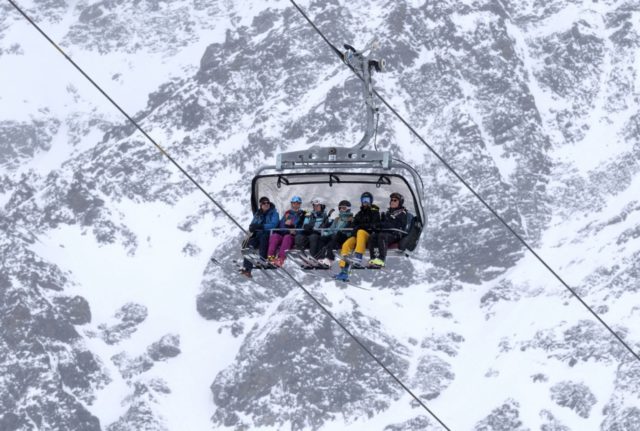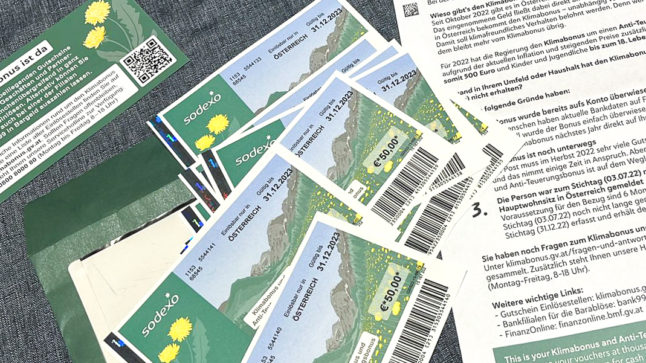The skiing season has started in Austria, and most resorts are now open for those seeking the downhill adrenaline on skis or snowboards.
Winter sports are considered a tradition in the country of the Alps, but skiing and similar outdoor pastimes are notoriously expensive, especially for those who just want to try it out and don’t have season tickets or the equipment.
Day ticket prices to some of Austria’s famous ski resorts can cost over € 70 – and that’s only to use the lifts and go down the pistes, not counting expenses from the equipment, outfits, food or beverages.
Is there any way to ski cheaply in Austria? Are there more affordable resorts? Here are our tips to enjoy skiing without breaking the bank.
Find less expensive ski resorts
Some sports are cheaper than others (find a ball and something to act as the goal and you will have yourself a football match), and we can’t deny that skiing is on the more expensive side. However, ski resorts also charge for their “brands” and locations, so some will have a higher price tag simply because they are more sought after, have a busy nightlife, are traditional spots for higher earners or have prettier views.
READ ALSO: 29 ways to save money in Austria (but still have fun)
If you go near Ischgl, in Tyrol, for example, a day pass will be upwards of € 70, and you can expect accommodation and food prices to be higher as well.
Other resorts and ski runs are much cheaper. Here are a few examples:
- Bödele, in Vorarlberg, has day tickets for adults costing € 43.20
- Axamer Lizum, in hotspot Tyrol, has day tickets for adults costing € 49.50 in the high season
- Salzburg is also expensive, but some places offer €54 for a day ticket for adults, like Fanningberg.
- In Upper Austria, an adult can ski during the whole day for €24 in Kirchschlag or €21 in Hochlecken.
- In Carinthia, day tickets for adults cost €38.50 in Koralpe.
- Rieseralm, in Styria, has day tickets costing €38.
- In Lower Austria, there are cheaper options as well, such as Aichelberglifte Karlstiff (€28.60; however, there will be no operation in the 2023/24 season, and the resort will be back for the 2024/25 season) and St Corona am Wechsel (€29,50).
People in Vienna often go nearby to Semmering for a short ski outing, with day tickets for adults costing €49. However, being the “Viennese Alps” comes with another price: the area is usually very full on weekends or whenever there’s fresh snow.
Smaller towns, especially in the Alps region, also have their own ski lifts that are less touristy, bringing people up to the top of the slopes. Those hidden gems can be cheaper than the better-known resorts. In Breitenfurt bei Wien, near the capital, a family-friendly ski slope where each ride up the ski lifts costs €1.40.
Some people will also hike up the slopes and then ski down off-piste, but a high level of knowledge and experience is recommended for this.

It’s not all about the pistes
Skiing trips are expensive because of the whole package – though the daily rates certainly can make them very expensive. The first tip is to consider different tickets other than the day-tickets for adults we mentioned. Most places will have discounts for families or groups.
There are also discounts for season tickets if you plan on skiing for many days or lower prices for fewer hours of skiing, which is especially good if you are just starting, as an entire day of skiing can be exhausting if you are not used to it.
READ ALSO: Eight things to know before moving to Tyrol in Austria
Most resorts also practice different prices for high season (more expensive) or shoulder seasons, and you can save hundreds of euros just by planning your trip a week ahead or later.
Another significant cost for ski trips is the equipment. You can’t just go somewhere and ski. You’ll need proper outfits and, well, the skis. Buying all of it can be extremely costly, so renting it out for the day is the better option. Or, better yet, if you have a local friend who will lend you their gear, that can be great.
If you plan on skiing for many days, buying second-hand can save you a lot of money.
Finally, ski resorts tend to take advantage of the fact that people are basically stranded on mountains and valleys during their ski adventures, meaning that food and beverage prices can add up to a lot. Even one of the cheapest drinks, the “ski water”, has a hefty price tag just because of its name and popularity when, in reality, it is nothing but sparkling water and raspberry syrup.
READ ALSO: Life in Austria: Must-do activities to add to your bucket list
Your local friends will always advise you to take your drinks with you if you want to save money. You can make your own ski water juice, bring hot tea in a proper bottle and make yourself a sandwich with ingredients from the closest supermarket. That will get you going for the day and save you dozens of euros in the meantime.
Do you have more tips on how to save money while skiing in Austria? Do you have a favourite affordable resort or a hidden ski lift you love? Let us know in the comments below, or send us an email to [email protected].



 Please whitelist us to continue reading.
Please whitelist us to continue reading.
Member comments